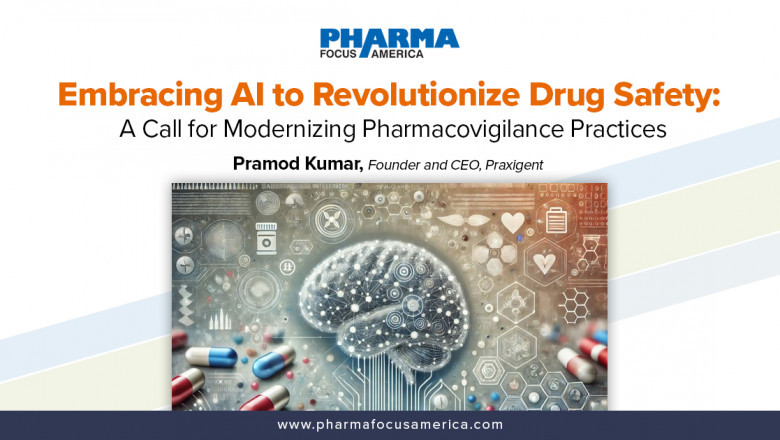views
Author: Pramod Kumar, Founder and CEO, Praxigent

Pharmacovigilance (PV) is more than a regulatory requirement—it is a lifeline for patients worldwide. Every adverse drug reaction (ADR) report represents a real patient, a mother navigating pregnancy, a child battling illness, or an elderly individual managing multiple conditions. In this rapidly evolving field, a "one size fits all" approach is inadequate. The complexity of human diversity demands a pharmaceuticalvigilance system capable of uncovering hidden risks and responding with agility. AI technologies, particularly Large Language Models (LLMs) and Generative AI (Gen AI), provide a transformative opportunity to modernize PV, ensuring timely identification and reporting of safety concerns, especially in the most vulnerable populations.
This article explores how AI can revolutionize drug safety by addressing challenges across the pharmacovigilance spectrum and aligning with the vision of health agencies across the world. It also highlights how AI can address longstanding inefficiencies in case intake, signal detection, regulatory compliance, and reporting. Special emphasis is placed on the importance of timely reporting from diverse patient populations and the need for a tailored approach to pharmacovigilance.
The Human Cost of Delayed Reporting

Every delay in reporting an adverse event is a missed opportunity to protect patients. Vulnerable populations—like children, pregnant women, and the elderly—are often at greater risk due to their unique physiological conditions. For instance:
- Pregnant Women: ADRs during pregnancy can lead to devastating outcomes, such as congenital anomalies or pregnancy loss. Timely reporting is critical to identify risks early and prevent similar outcomes in others.
- Children: With their developing bodies, children may react differently to medications than adults. Delayed detection of adverse effects can lead to widespread harm in pediatric populations.
- Elderly Patients: Polypharmacy in elderly individuals often increases the risk of ADRs. Early identification of drug interactions could prevent hospitalizations and improve quality of life.
How AI Enables a Tailored Approach to Pharmacovigilance
AI-powered systems address the shortcomings of the "one-size-fits-all" approach by adapting to the complexities of real-world data and diverse populations. Here’s how:
1. Uncovering Hidden Risks in Diverse Populations
- Data Integration and Analysis: AI can process vast amounts of data from various sources, including electronic health records, social media, and spontaneous reporting systems, uncovering safety signals that might otherwise go unnoticed.
- Subpopulation Insights: AI systems can analyze adverse event trends within specific subpopulations, such as individuals with rare genetic markers, allowing for more precise risk assessment.
Learn more: https://www.pharmafocusamerica.com/articles/embracing-ai-to-revolutionize-drug-safety






















Comments
0 comment